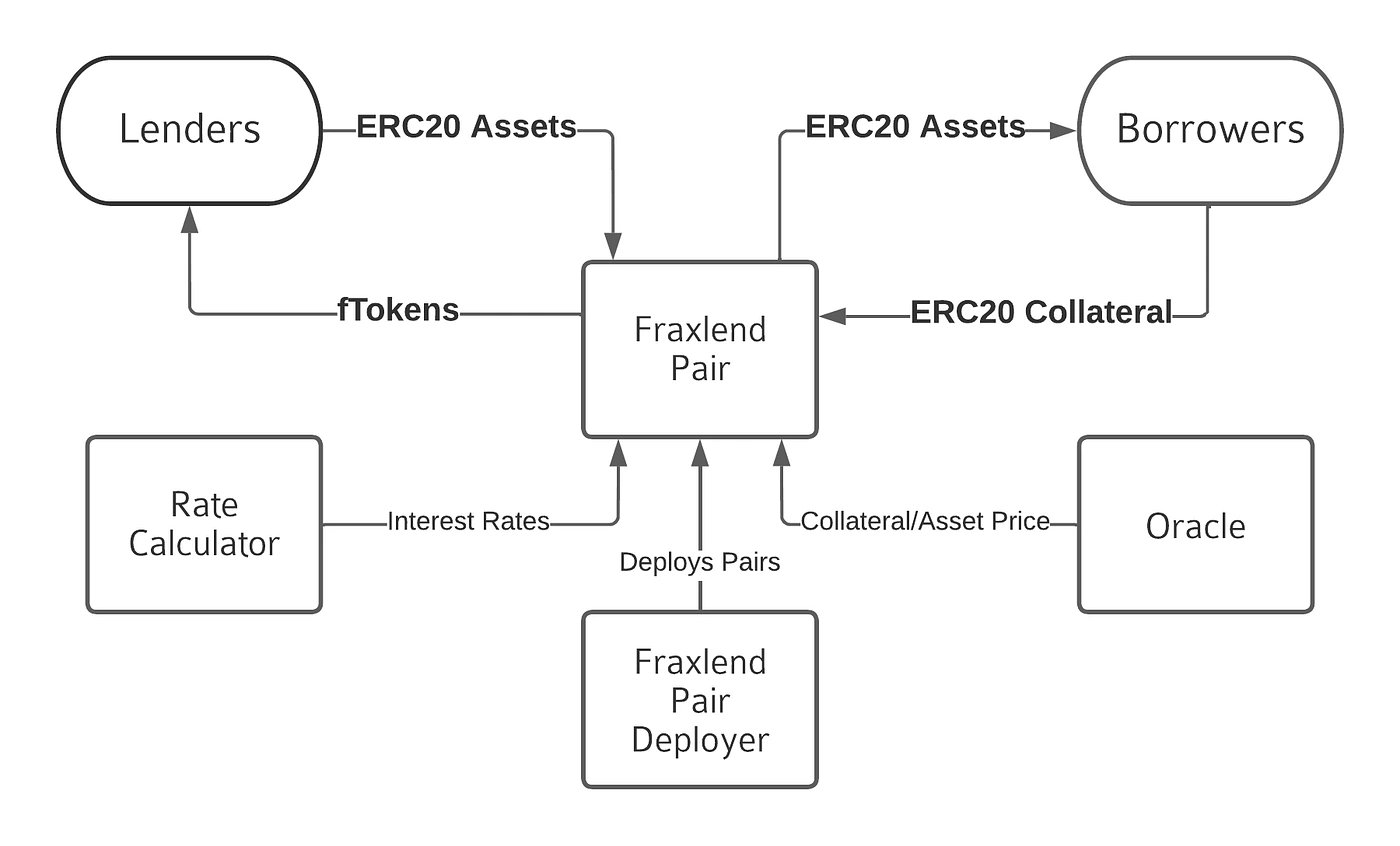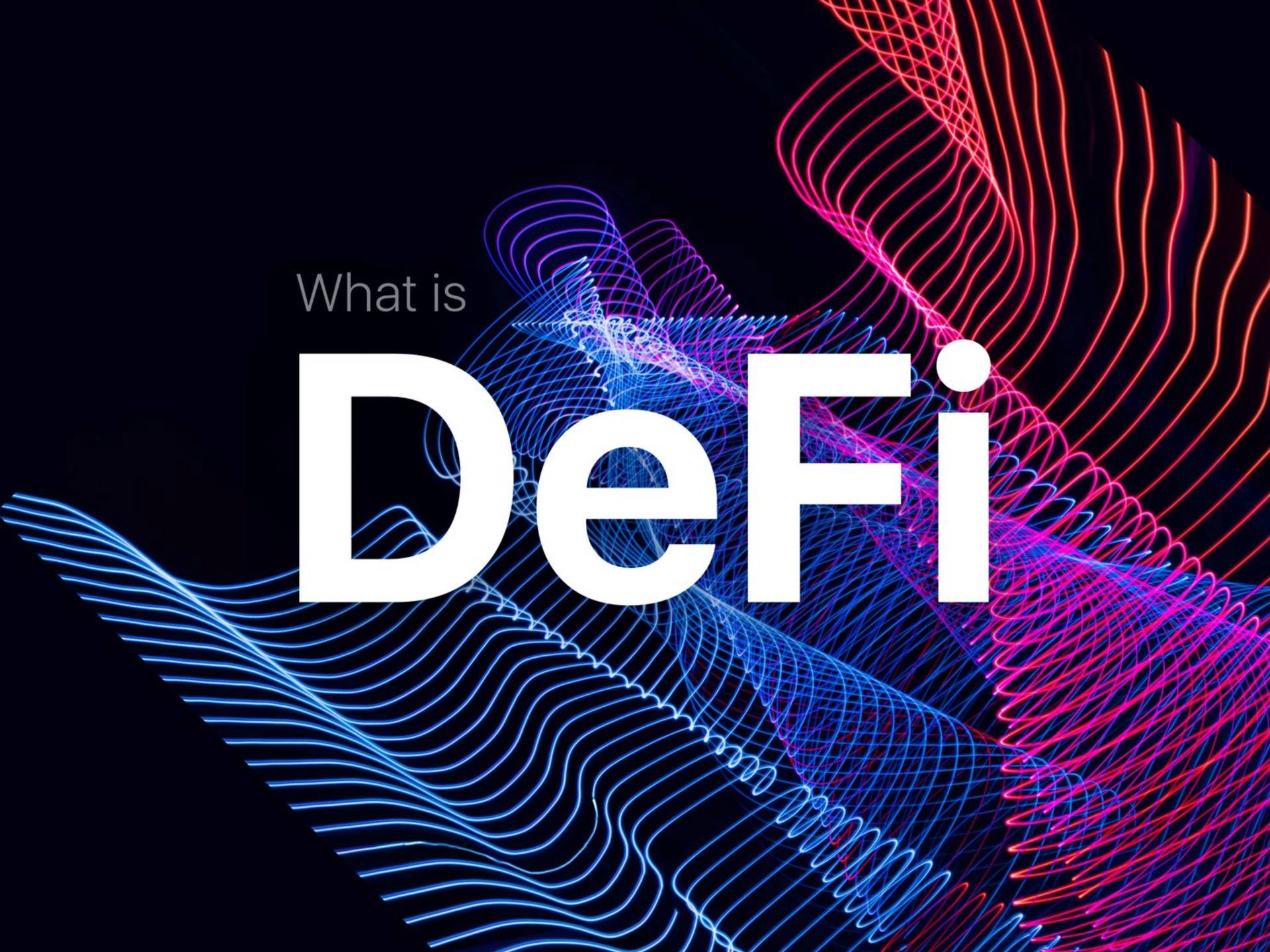위키 구독하기
Share wiki
Bookmark
Decentralized Finance (DeFi)
에이전트 토큰화 플랫폼 (ATP):에이전트 개발 키트(ADK)로 자율 에이전트 구축
Decentralized Finance (DeFi)
**탈중앙화 금융 (DeFi)**은 폐쇄적인 중앙화된 금융 시스템에 대한 개방적이고 탈중앙화된 대안이 존재하는 탈중앙화된 금융 시스템의 개념입니다. DeFi dapps 및 프로토콜은 블록체인 및 스마트 계약과 같은 기술을 사용하여 중개자가 적고 더 투명하게 금융 서비스를 제공합니다.[1][2][3]
개요
DeFi(탈중앙화 금융)는 일반적으로 블록체인에 구축된 디지털 자산, 프로토콜 및 탈중앙화 애플리케이션(dApps)을 의미합니다.[4] DeFi는 중앙 권한이 없는 금융 서비스입니다. 기존 금융 시스템의 요소를 가져와 중개자를 스마트 계약으로 대체합니다.[5]
대부분의 DeFi 프로토콜은 이더리움 블록체인에서 작동하지만, 더 높은 확장성을 위해 다른 경쟁 블록체인으로 마이그레이션한 프로토콜도 있습니다.[6][7]
DeFi는 이더리움에 적용되는 모든 특성을 활용합니다.
- 허가 없음: 누구든지 제3자 개입 없이 모든 DeFi 서비스에 접근할 수 있습니다. 사용자는 스마트 계약과 상호 작용하기 위해 허가를 요청할 필요가 없습니다.
- 검열 저항성: 국적, 성별, 정치적 신념과 같은 식별 특성으로 인해 DeFi 서비스 사용이 제한되지 않습니다.
- 프로그래밍 가능: 스마트 계약으로 코딩할 수 있는 모든 서비스는 DeFi 서비스로 도입될 수 있습니다.
- 투명성: 모든 스마트 계약은 분석 및 검증이 가능합니다. 또한 모든 사용자 상호 작용을 추적할 수 있으므로 DeFi는 완전히 투명합니다.
- 합성 가능성: DeFi 서비스는 서로 활용하여 새로운 서비스와 서버를 만들 수 있습니다.
- 신뢰 없음: 스마트 계약과의 모든 트랜잭션 및 상호 작용은 원장에 표시되고 기본 블록체인에 의해 보호됩니다.[32]
역사
Inception (2017-2018)
2018년 8월, Ethereum(이더리움) 개발자들과 Set Protocol의 공동 설립자인 Inje Yeo, 0x(제로엑스)의 Blake Henderson, Dharma의 Brendan Forster를 포함한 기업가들 간의 Telegram 채팅에서 DeFi라는 용어가 만들어졌습니다. 그들은 이더리움 기반으로 구축되는 개방형 금융 애플리케이션 운동의 이름을 찾고 있었습니다. "DeFi" 외에도 Open Horizon, Lattice Network, Open Financial Protocols 등이 고려되었습니다. [33] 결국 채팅 참여자들은 DeFi라는 이름을 선택했습니다. [8]
얼마 후인 2018년 10월 4일, 이 그룹은 Dharma Protocol, 0x(제로엑스) 프로젝트, Coinbase(코인베이스), Abacus Protocol 등 여러 기관과 협력하여 샌프란시스코에서 첫 번째 DeFi 정상회담을 개최했습니다. 첫 정상회담 이후 전 세계적으로 수백 건의 컨퍼런스가 개최되었습니다. 또한 DeFi Telegram 그룹은 기하급수적인 성장을 보였습니다. [9] [10]
성장 (2018-2022)
DeFi 프로토콜의 가치는 커뮤니티 성장과 함께 빠르게 증가했습니다. 2018년 7월, DeFi 프로토콜의 가치는 1억 8,100만 달러였습니다. 거의 1년 후, 그 총 가치는 5억 달러를 돌파했습니다. 이러한 이정표 외에도, DeFi는 프로토콜이 보유되는 곳의 다양화를 보이기 시작했습니다. MakerDAO(메이커다오)가 2018년 12월 DeFi 가치의 91% 이상을 보유했었고, 같은 해 7월에 그 비중을 20% 낮추었습니다.[11]
2020년 2월 7일, DeFi의 가치는 10억 달러의 이정표에 진입했습니다. DTC Capital의 Spencer Noon은 성명에서 다음과 같이 말했습니다.
다른 스마트 계약 플랫폼은 개발자들의 관심, 툴, 인프라 측면에서 이에 근접하지 못합니다. DeFi가 오늘날 다른 곳에서는 존재할 수 없다고 생각할 정도입니다. 그리고 아마도 가장 놀라운 것은, 탈중앙화 금융에서 진정으로 신뢰할 수 있는 유일한 담보 유형으로서 ETH가 장기적인 통화 프리미엄을 축적할 수 있는 신뢰할 만한 사례를 마침내 보고 있다는 것입니다.[12]
그 직후, 총 잠금 가치는 감소했다가 2020년 6월 초경에 다시 10억 달러의 이정표로 빠르게 돌아왔습니다. 성장에 크게 기여한 것은 시장에 등장하기 시작한 DeFi 거버넌스 토큰이었습니다. DeFi 세계는 Compound(컴파운드), Balancer(밸런서), UMA(우마), Curve Finance(커브 파이낸스), pNetwork(피네트워크)를 포함한 회사의 네이티브 거버넌스 토큰이 도입되는 것을 보았습니다. 이 토큰들은 프로토콜 사용을 통해 얻을 수 있습니다.[13][14]
그 결과, 거버넌스 기능을 갖춘 프로토콜의 총 가치 잠금(TVL)이 빠르게 증가하기 시작했습니다.[15]
2020년 5월 초,Bitcoin(비트코인)이 WBTC(WBTC)를 통해 DeFi 생태계에 진입했습니다. MakerDAO(메이커다오) 플랫폼에 추가되었고, 0%의 USD Coin 안정성 수수료가 적용되었습니다. RenVM(렌VM)은 Bitcoin(비트코인), Bitcoin Cash(비트코인캐시), Zcash(지캐시)를 ERC20(ERC20) 토큰으로 minting(민팅)하는 데 사용되는 플랫폼으로 출시되었습니다. 이 플랫폼의 도입은 비트코인 보유자가 "DeFi 환경" 내에서 디지털 자산을 사용할 수 있게 되었으므로 가치 상승에 기여했습니다. 가치 상승에 기여한 또 다른 주요 출시는 dYdX(dYdX)의 Perpetual Contracts 출시였으며, 첫 번째 제품은 이더리움에서 최대 10배 레버리지를 사용하여 BTC-USDC(USDC)를 거래하는 기능이었습니다. 비트코인 선물에 대한 관심 증가는 도미노 효과를 창출하여 DeFi의 총 가치 잠금 성장에 추가되었습니다.[16][17][18]
총 가치 잠금의 증가는 2020년 7월에 1단계가 출시된 이더리움 머지의 도입에도 기인합니다. 탈중앙화 보험 프로토콜인 Nexus Mutual(넥서스 뮤추얼)을 포함한 여러 회사는 현재 자산의 상당 부분을 Eth 2.0에 스테이킹할 계획에 관심을 표명했습니다. 투자자들은 Proof-of-Stake(PoS)(지분 증명)의 도입이 스테이킹한 사람들에게 "블록 검증"에 대한 보상을 받을 수 있는 능력을 제공할 것으로 기대했습니다.[19][20][21]
이더리움과 Eth 2.0의 미래에 대한 신뢰가 높아짐에 따라 이더리움 네트워크는 트래픽 최고치를 기록하기 시작했습니다. 그 결과 DeFi 자산의 수가 기하급수적으로 증가했으며, 2020년 4월과 5월 사이에 보유 자산이 두 배로 증가하여 처음으로 1,000개에 도달했고 사용자 수는 55만 명을 넘었습니다. 또한 DeFi와 stablecoin(스테이블코인)에서 발견되는 중간 거래 수수료는 2년 만에 최고치를 기록했으며, 2020년 5월 한 달 동안 이더 가스 수수료로만 약 2.56달러가 지출되었습니다. DeFi 플랫폼의 총 가치 잠금(TVL)은 2020년 8월에 50억 달러를 넘어섰습니다. 이는 2020년 6월 초 10억 달러에 도달한 이후 불과 60일 만에 5배 증가한 것입니다.[23][24][25]
데이터 분석 사이트인 DeFi Pulse(DeFi Pulse)에 따르면, 2020년 8월 16일 DeFi smart contracts(스마트 계약)에 60억 달러 상당의 암호화폐가 잠겨 있는 사상 최고치를 기록했습니다. MakerDAO(메이커다오), Aave(아이브), Curve Finance(커브 파이낸스)가 선두를 달렸으며, 이들 사이에 약 42억 달러가 잠겨 있었습니다.[26]
2021년 3월 현재 DeFi의 총 가치 잠금(TVL)은 약 250억 달러에서 거의 1000억 달러로 증가했습니다. 소비자 성공의 풍부함을 바탕으로 DeFi는 다음 목표로 기관 도입을 목표로 하기 시작했습니다.[27]
2021년 12월 2일, DeFi는 2560억 달러의 사상 최고치 총 가치 잠금(TVL)을 기록했습니다. 2022년 4월 3일, DeFi의 총 가치 잠금(TVL)은 약세장에 진입하면서 2310억 달러로 하락했습니다. 2022년 9월 현재 DeFi의 총 가치 잠금(TVL)은 약 549.5억 달러입니다. TVL은 2022년 3월 29일 이후 5개월 만에 이렇게 낮은 수준을 기록하지 않았습니다.[29][31]
통합 (2023년 현재)
초기 급성장세가 둔화되었지만, 탈중앙화 금융(DeFi)은 더 안정적이고 지속 가능한 단계에 접어들어 기존 금융 시스템으로의 광범위한 채택 및 통합을 위한 기반을 마련하고 있습니다. 2022년 이후는 다음과 같은 특징을 보였습니다.
- 시장 조정 및 통합: 2022년의 극적인 시장 침체는 많은 DeFi 프로젝트들이 모델을 재평가하고 지속 가능성에 집중하도록 강제했습니다. 투기적인 성격이 덜하고 유틸리티에 중점을 둔 프로젝트들이 두각을 나타냈습니다.
- 규제 강화: 규제 당국의 관심 증가로 DeFi 플랫폼들은 규정 준수 및 위험 관리에 중점을 두면서 더 신중한 접근 방식을 취하고 있습니다.
- 기관 투자자의 채택: 시장 변동성에도 불구하고 기관 투자자들은 DeFi에 대한 관심을 높이고 있으며, 이는 더 성숙하고 안정적인 시장 환경으로 이어지고 있습니다.
- 기술 발전: 기본 기술은 확장성, 상호 운용성 및 보안에 중점을 두고 계속 발전하고 있습니다.
- 사용 사례 확장: DeFi는 단순한 대출 및 차입을 넘어 보험, 파생 상품 및 지불과 같은 새로운 분야에서 사용 사례가 등장하고 있습니다.
2024년 3월 5일, DeFi TVL은 1,013억 6천만 달러에 달했으며, 대출이 이 금액의 326억 2천만 달러(32.2%)를 차지했고, 탈중앙화 거래소가 199억 7천만 달러(19.7%), 담보 부채 포지션이 122억 2천만 달러(12%), 재스테이킹 활동이 100억 6천만 달러(9.9%)를 차지했습니다.[38]
활용 사례
탈중앙화 거래소 (DEXs)
탈중앙화 거래소는 일반적으로 여러 블록체인 상에 구축되므로, 해당 기술과의 호환성이 특정됩니다. 예를 들어 이더리움 블록체인 상에 구축된 DEX는 ERC-20 토큰과 같이 이더리움 기반 자산의 거래를 가능하게 합니다. DEX를 이용하면 사용자는 중앙화된 플랫폼에서 벗어나 자산을 보관하면서 블록체인 기반 거래를 통해 지갑에서 바로 거래할 수 있습니다. 자동화 시장 조성자(AMM)는 DEX의 한 유형으로, 2020년에 널리 보급되었으며 스마트 계약과 유동성 풀을 사용하여 암호 자산의 매수 및 매도를 가능하게 합니다. 예를 들어, Fraxswap은 장기간에 걸쳐 대규모 거래를 신뢰할 수 있게 진행하기 위해 시간 가중 평균 시장 조성자 (TWAMM)가 내장된 최초의 AMM입니다. 이는 완전히 허가 없이 사용할 수 있으며, 일정 곱 불변식 (xy=k)을 기반으로 합니다.[43][44]
또한, 특정 DEX는 중앙화 거래소보다 기능이 적고 관련 금융 수수료가 더 높을 수 있습니다.[34]
대출 플랫폼
DeFi에서 대출과 차용은 이제 가장 일반적인 활동 중 하나입니다. 사용자는 암호화폐를 담보로 사용하여 대출 프로토콜을 이용하여 돈을 빌릴 수 있습니다. 대출 솔루션이 수십억 달러의 총 가치(TVL)를 기록하면서 탈중앙화 금융은 생태계를 통해 막대한 현금 흐름을 경험했습니다.[34]
예를 들어, Frax Finance의 프로토콜인 Fraxlend는 신뢰할 수 없고, 허가가 필요 없으며, 비보관식 대출 플랫폼으로서 두 개의 ERC20 토큰 간에 대출 시장을 제공합니다. 각 쌍은 독립적인 시장이며, 누구든지 대출 및 차용 활동에 참여할 수 있습니다.[45]

결제와 스테이블코인
DeFi는 거래와 계약으로 구성된 금융 시스템으로 간주되려면 안정적인 계정 단위 또는 자산이 필요합니다. 참여자는 사용하는 자산의 가치가 변하지 않을 것이라고 예상할 수 있어야 합니다. 이러한 상황에서 스테이블코인이 유용합니다.[34]
DeFi 시장에서 일반적인 대출과 차입은 스테이블코인을 사용하여 안정화됩니다. 스테이블코인은 일반적으로 미국 달러 또는 유로와 같은 법정 화폐에 고정되어 있기 때문에 암호화폐만큼 변동성이 크지 않아 거래 및 사업에 선호됩니다.
2020년 당시 존재했던 스테이블코인은 담보 기반이거나 알고리즘적으로 발행 및 소각되었습니다. 담보화된 스테이블코인은 자본 효율성이 낮은 반면, 완전 알고리즘형 스테이블코인은 본질적으로 취약하며 변동성이 큰 시장 상황에서 붕괴될 위험이 있습니다. Frax Finance는 두 가지의 장점을 결합하여 문제점을 해결하고 최초의 분수 알고리즘 스테이블코인 프로토콜을 만들었습니다. 2019년 5월에 시작된 이 프로젝트는 이전에 Decentral Bank라는 이름으로 알려졌으며 Sam Kazemian, Travis Moore, 그리고 Jason Huan이 설립했습니다.
2022년 10월 기준 상위 5개 스테이블코인에는 Tether (USDT), USD Coin, Binance USD, DAI, 그리고 FRAX가 포함됩니다.
마진과 레버리지
마진과 레버리지 구성 요소는 탈중앙화 금융 시장을 한 단계 끌어올려 사용자가 다른 암호화폐를 담보로 사용하여 암호화폐를 마진으로 빌릴 수 있도록 합니다. 또한, 레버리지는 스마트 계약에 통합되어 사용자의 수익을 증가시킬 수 있습니다. 시스템이 알고리즘에 의존하고 인적 요소가 부족하다는 점을 감안할 때, 오작동이 발생할 경우 사용자의 위험이 증가합니다.[35]
보험
DeFi의 또 다른 중요한 측면은 보험입니다. 금융 기관은 고객으로부터 보험료를 받는 대가로 잠재적 손실에 대한 보험을 제공합니다. DeFi 분야에서는 코드와 스마트 계약을 통해 많은 자금이 관리되며, 수십억 달러가 손실된 스마트 계약 악용 및 공격 사례가 이미 무수히 많습니다. DeFi 보험 프로토콜을 통해 사용자는 자금이 잠겨 있는 경우 프로토콜이 악용될 가능성으로부터 자신을 보호할 수 있습니다. 권한 부여된 블록체인을 사용하여 보험 증권을 저장하고 관리함으로써 스마트 계약은 보험 회사가 더욱 비용 효율적인 사업을 구축하는 데 도움이 됩니다.[35]
탈중앙화 자율 조직 (DAO)
DAO는 상당한 자금을 관리하고 복잡한 결정을 내리는 등 점점 더 정교해졌습니다. 탈중앙화 금융(DeFi)은 이러한 탈중앙화 거버넌스 모델을 위한 인프라를 제공하는 데 중요한 역할을 했습니다.
게임과 NFT 통합
DeFi는 게임 및 NFT 생태계와 점점 더 통합되어 게임 내 경제, 토큰화된 자산 및 분산형 마켓플레이스를 제공합니다.[42]
새로운 동향
- 탈중앙화 금융(DeFi)의 금융 소외계층 접근성 확대: 기존 금융 서비스 이용이 어려운 사람들에게 DeFi 접근성을 높여 금융 포용성을 제공하려는 노력이 진행 중입니다. [39]
- 녹색 금융: 지속 가능한 프로젝트 자금 조달 및 탄소 시장 조성에 DeFi를 활용하여 환경 지속 가능성에 기여하고 있습니다. [40]
- 중앙은행 디지털 화폐(CBDC): DeFi 플랫폼은 CBDC와의 통합을 모색하여 기존 금융과 탈중앙화 금융 간의 간극을 해소할 가능성을 제시합니다. [41]
구성 요소
스마트 계약 (Smart Contracts)
많은 탈중앙화 금융(DeFi) 프로토콜과 탈중앙화 애플리케이션 (DApp)에서 스마트 계약 코드를 사용하여 제품, 서비스, 데이터, 자금 및 기타 항목의 교환을 용이하게 합니다. DApp은 모든 거래가 합법적이고 투명하며 신뢰할 수 있도록, 그리고 약정의 미리 정해진 조항에 따라 상품이나 서비스가 실제로 이전되도록 스마트 계약을 사용해야 합니다.[36]
집계기와 지갑
집계기는 사용자가 DeFi 시장과 상호 작용하는 인터페이스입니다. 이는 사용자의 암호화폐 자산을 여러 수익 농사 플랫폼 간에 자동으로 전환하여 수익을 극대화하는 탈중앙화된 자산 관리 시스템입니다. 디지털 자산은 지갑을 통해 저장 및 거래됩니다. 지갑은 소프트웨어, 하드웨어 및 거래소 지갑을 포함한 다양한 형태로 제공됩니다. 여러 자산 또는 단일 항목을 포함할 수 있습니다. 사용자가 개인 키를 관리하는 자체 호스팅 지갑과 같은 지갑은 다양한 DeFi 플랫폼 사용을 가능하게 하므로 DeFi의 중요한 부분입니다. [34]
탈중앙화 마켓플레이스
탈중앙화 마켓플레이스는 블록체인 기술의 핵심적인 사용 사례를 보여줍니다. 이는 사용자들이 중개자 없이 신뢰할 수 있는 방식으로 서로 거래할 수 있도록 함으로써, P2P 네트워크에서 "피어(peer)"의 개념을 구현합니다. 탈중앙화 마켓플레이스를 가능하게 하는 대표적인 블록체인은 이더리움 스마트 계약 플랫폼이지만, 사용자들이 특정 자산(예: 대체 불가능 토큰(NFT))을 판매하거나 교환할 수 있도록 하는 다른 많은 플랫폼들이 있습니다.
오라클/예측 시장
오라클은 제3자 제공업체를 통해 실제 오프체인 데이터를 블록체인에 전달합니다. 오라클은 선거부터 가격 변동까지 다양한 이벤트의 결과에 사용자가 의존하여 베팅할 수 있는 DeFi 암호화폐 플랫폼의 예측 시장을 위한 길을 열었습니다. 이러한 베팅에 대한 지급은 스마트 계약으로 관리되는 자동화된 프로세스를 통해 이루어집니다.[34]
1계층
1계층은 개발자가 구축하기로 선택한 블록체인을 나타냅니다. DeFi 애플리케이션과 프로토콜이 배포되는 곳입니다. 이더리움은 탈중앙화 금융의 주요 1계층 솔루션이지만, Polkadot, Tezos, Solana, BSC, Cosmos 등의 대안이 있습니다.
DeFi 부문 솔루션이 여러 블록체인에서 실행되는 것은 여러 가지 잠재적 이점을 제공합니다. 경쟁 블록체인의 성능에 따라 블록체인은 속도를 개선하고 수수료를 낮추도록 강요받을 수 있으며, 이는 기능 개선으로 이어질 수 있는 경쟁 환경을 조성합니다. 또한 서로 다른 1계층 블록체인의 존재는 모든 사람이 단일 1계층 옵션에 몰리는 대신 개발 및 트래픽을 위한 더 많은 공간을 남겨둡니다.[34]
잘못된 내용이 있나요?
